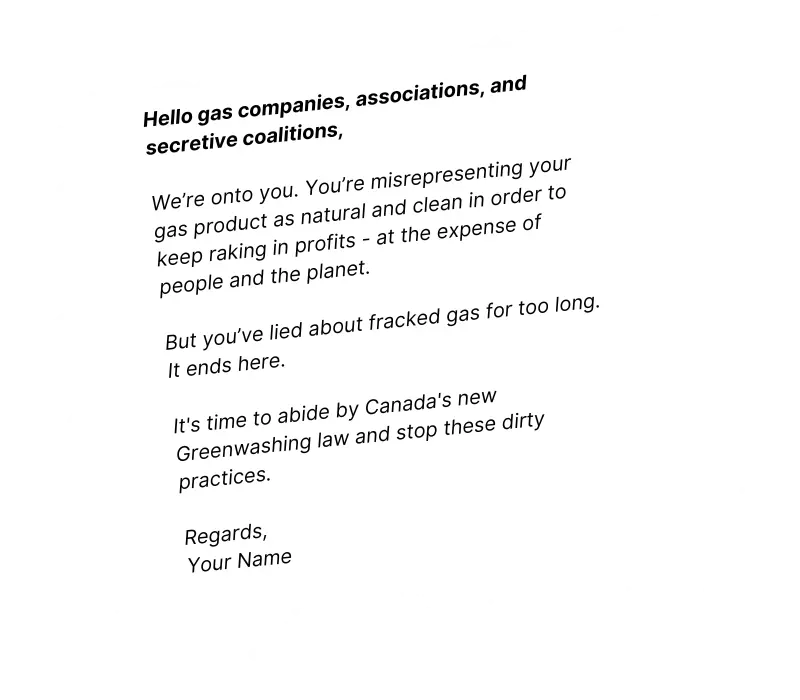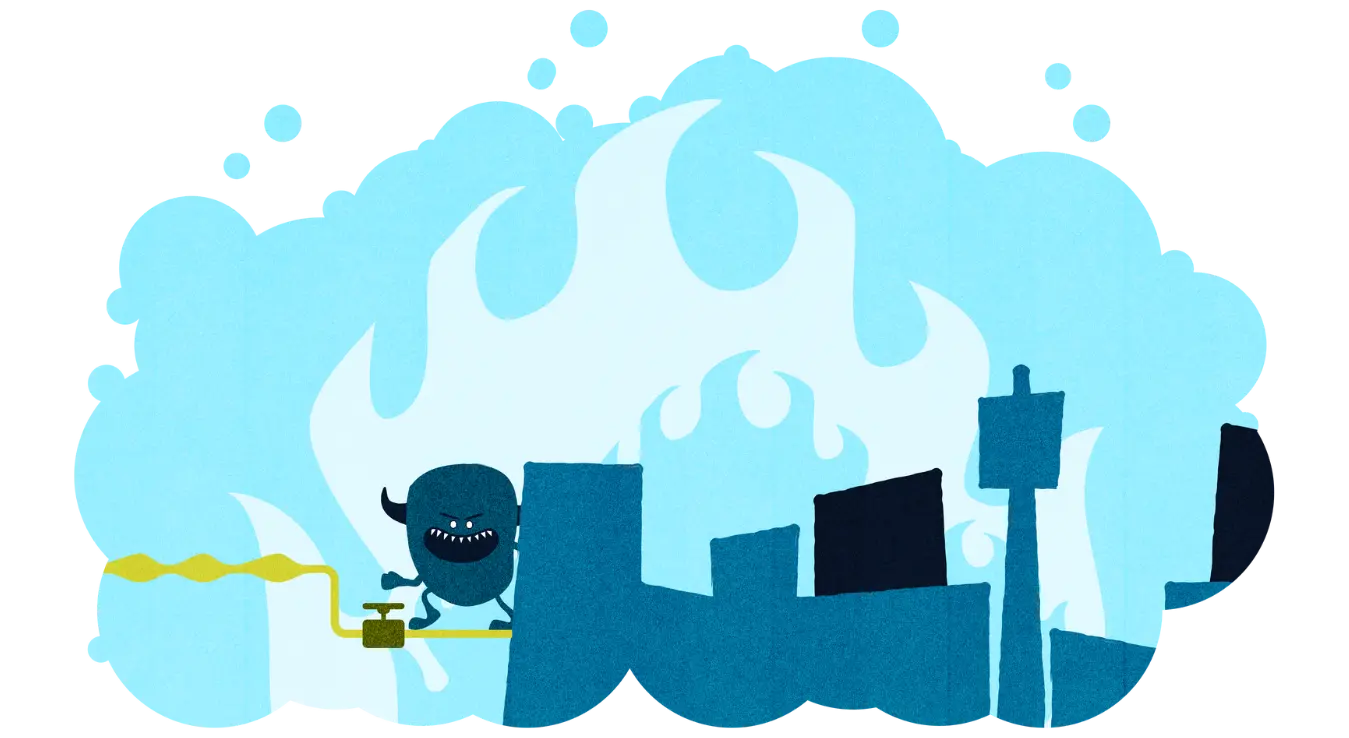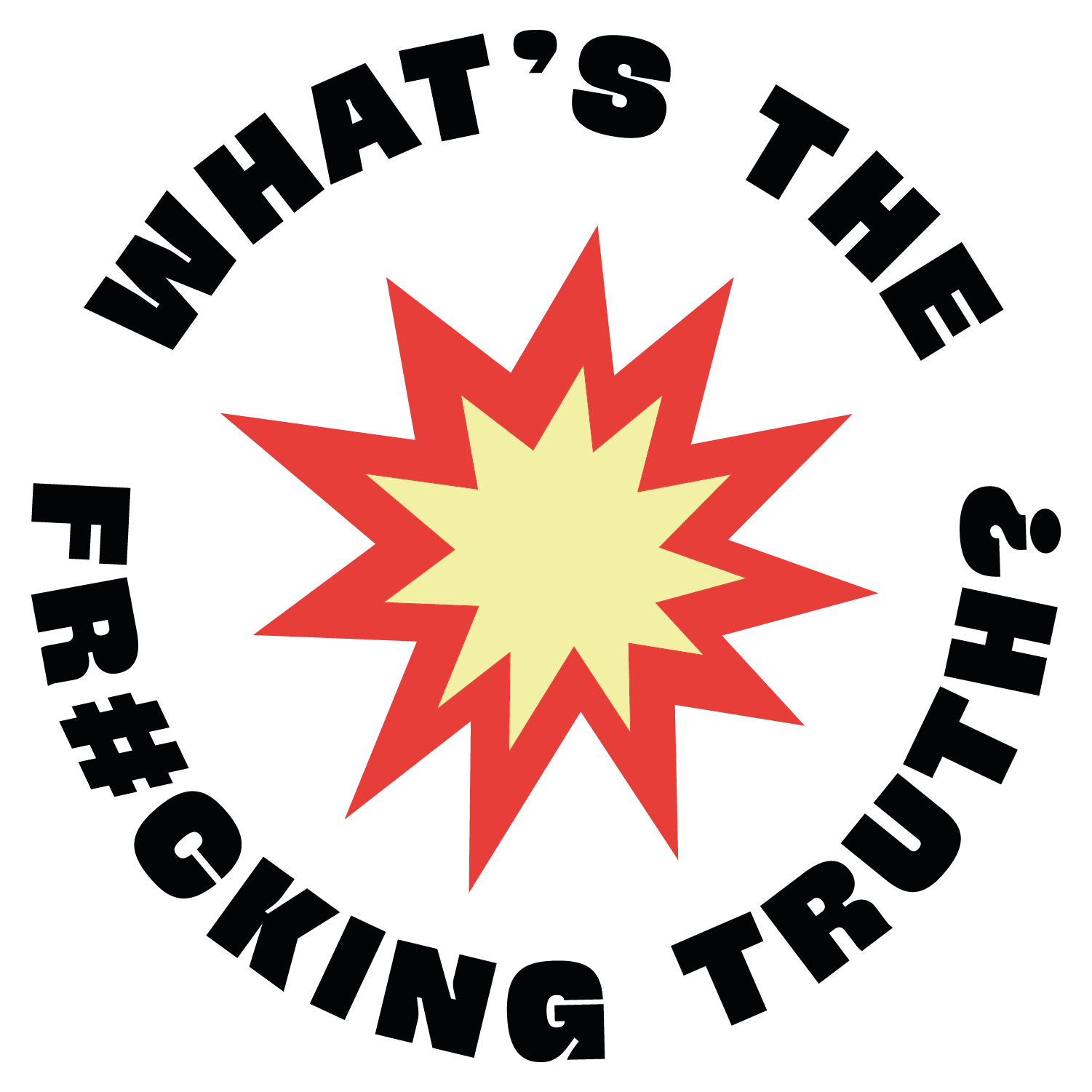
Electric heat pumps
Heat pumps are a win-win-win for the climate, our wallets, and public health.
- Modern electric heat pumps are incredibly efficient appliances that allow us to heat and cool our homes with far less energy than gas heating systems
- The average heat pump is 300% more efficient than a gas furnace and uses electricity as an input, resulting in lower greenhouse gas emissions - by 45% to 85%
- Because heat pumps are highly efficient and use electricity as a power source, they lead to lower monthly energy bills for residents
- Heat pumps also offer stable monthly energy costs because electricity is often provided by crown corporations that are mandated to keep electricity prices low. This in contrast to volatile global gas prices that are impacted by global events
- Heat pumps double as air conditioners in the summer, ensuring proper cooling in hot summer weather and making homes much safer for vulnerable residents during extreme heat events
- With the addition of a filter, heat pumps can provide air purification which is critical as wildfire smoke affects more people
- Advancements in heat pump technology mean they can now heat homes in the coldest of temperatures, including in northern regions of Canada
- Many places are embracing heat pumps including European countries and the United States
- Modern electric heat pumps are several times more efficient than old school electric baseboard heaters which means they are less costly to operate
- Equipping homes with heat pumps from the outset of construction means avoiding the cost and hassle of retrofits in the future
- Unlike gas equipment, heat pumps don’t emit poisonous chemicals
- Building electrification could be a significant job creator
- Heat pumps are a perfect heating and cooling solution but there are other low-carbon heating options for large new builds, including geothermal and district energy
- While the upfront costs of heat pumps are sometimes higher than gas furnaces, gas systems require the construction of gas lines which are extremely expensive and are usually paid for by residents
- Installing heat pumps at the construction stage can speed up construction timelines since there is no need to install pipelines or gas hookups
- Building electric homes has been shown to cost a similar amount or even less than gas-reliant homes. See sources: Source 1, Source 2, Source 3, Source 4, Source 5
- Green buildings offer long-term operational savings allowing residents to save money on energy costs
- Many developers across the country have been building green homes for decades - and say they are cheaper and superior to gas-dependent homes
- Buildings constructed today will likely still be standing in 2050, so it’s better to build them right the first time instead of saddling future residents with costly retrofits
- As we transition all energy to renewables, even if currently electricity is partly generated with fracked gas, heat pumps are more efficient so they lead to lower fossil fuel use and emissions than directly using natural gas or oil to heat buildings.
- Renewable energy is a substantial source of electricity today, including in Canada where renewables power 66% of electricity, and the supply is projected to steadily increase
- Communities have been building local renewable power generation and more and more homes are using solar panels and battery storage, leading the way to cleaner and more local power generation
- The Canadian government has introduced Clean Electricity Regulations that will pave the way for cleaner electricity generation across the country
- Globally, electricity generated by renewables is getting cheaper and new storage and grid developments will enable emissions-free energy electricity
- Most gas furnaces have parts that run on electricity so the appliance doesn’t work when the power goes out
- Some people use gas generators or gas fireplaces as a backup heat source but these systems come with the risks and health impacts of gas and can be expensive
- The best protection from blackouts is moving to high-efficiency heating and improving grid reliability - not expensive, polluting backups for each individual building
- Battery backups like using electric vehicles (EVs) to power homes are good backup solutions for heat pumps that are becoming increasingly available and affordable
- Because we are inevitably moving towards electrification, electric utilities and transmission authorities are already planning for increased electricity generation and transmission to meet growing needs
- Interest in electrification is speeding up the process to meet increased energy demands
- Modeling has found that Canada can meet its needs for clean electricity “reliably and affordably” through a combination of growing solar and wind power generation, new transmission connections between provinces, and other grid improvements
- Municipalities are also preparing for increased electricity needs for buildings, and as green buildings become the norm, it will become easier to secure additional energy for new builds.
- Extra power can easily be generated with clean sources such as wind and solar (along with existing storage technology), ensuring that the electricity sector doesn’t become more polluting itself.
- British Columbia: BC Hydro, the province’s electricity planner, is preparing for increased electricity use. To respond to changes in electricity demand and supply at different types of the year, BC Hydro trades power with neighbours including Alberta, Washington, and California, exporting electricity when BC has a surplus (especially during cold winter months) and importing it when needed (including during summer droughts when water levels are unusually low). Overall, BC Hydro currently has a surplus of power and expects to have more than enough supply until 2030. Its 20-year Integrated Resource Plan is forecasting and preparing for scenarios with significantly increased electricity demand due to accelerated electrification of buildings and vehicles. In spring of 2024, BC Hydro also put out its first call for independent clean power producers in fifteen years, indicating that the utility is working on upgrading infrastructure to meet future demands.
- Ontario: The province’s agency that organizes energy use and supply, the Independent Electricity System Operator (IESO), is planning for increased electricity needs and is in the midst of procuring more electricity generation. The mix includes renewables but also new nuclear and gas plants. This is unfortunate and unnecessary as Ontario could meet all of its growing energy needs just with offshore wind. While the agency is planning for greater electricity demand, the sources should be clean and safe.
Gas is the worst
Gas is marketed as “natural” and “green” but it’s neither of those - and has many problems.
- Most gas is extracted through hydraulic fracturing, also known as fracking, where water and toxic chemicals are forced deep into the ground to release the fossil fuel
- Fracking uses a lot of water and leads to dangerous groundwater contamination
- Fracking has been linked to health problems (including birth defects, asthma, and cancer) in neighbouring communities
- In particular, Indigenous communities located near fracking sites experience negative health outcomes resulting from the release of toxic chemicals
- Gas leaks are common along transportation routes and can lead to explosions, causing injuries
- People of colour and low-income people bear disproportionate health and safety impacts from gas production and use
- Fracked gas is mainly comprised of the greenhouse gas methane, which has 84 to 86 times more of an impact on global warming than carbon dioxide over a 20-year period
- Methane is responsible for around 30% of the current rise in global temperature since the Industrial Revolution
- When fracked gas is purposely flared at wells and when it leaks during extraction and transportation, methane escapes
- In Canada, burning fracked gas to heat buildings is the third largest source of emissions nationally, accounting for 13 percent of the country’s total pollution
- In municipalities building emissions are often a top polluter
- Fracked gas is highly polluting and leaks at fracking sites, in aging pipe infrastructure, and also in our own homes
- Burning fossil gas produces indoor air pollution and contributes to smog
- Relying on gas furnaces means housing is connected to gas lines, which often leads to the use of gas appliances like gas stoves – which have been shown to cause asthma in children
Dangerous Distractions
The Gas industry is peddling false solutions like renewable natural gas (RNG), liquified natural gas (LNG), and hydrogen - to keep selling us more fracked gas.
- “Renewable” natural gas (RNG) is gas produced by sources such as wastewater, landfills, and agricultural waste
- This product is very expensive - around 4 to 17 times more expensive than regular gas
- There is nowhere near enough RNG to replace conventional gas
- If it’s going to be used at all, it should be in hard to decarbonize sectors like heavy industry
- Using RNG for building heating is a waste of resources since this function can easily be accomplished with clean electricity
- Buying into RNG infrastructure means the continued construction of gas infrastructure through the building of pipelines and facilities – unintentionally incentivizing the industry to continue business as usual
- RNG has most of the same negative impacts as regular gas, including poor indoor air quality and safety
- Just like fracked gas, RNG is almost entirely methane, and would be transmitted through the same system of leaky pipes and combustion units
- Liquified “Natural” Gas (LNG) is created by cooling fracked gas to -160ºC, creating a liquid that is 600 times smaller than fracked gas
- LNG is just fracked gas which has been cooled down dramatically to make it easier for transport across distances – but it is a fossil fuel like any other
- The carbon footprint of LNG has been shown to be worse than that of coal
- Most hydrogen is made using fracked gas, so producing and using it results in significant amounts of greenhouse gasses
- There is a limited amount of what’s called “green hydrogen,” which is hydrogen created using renewable energy
- Green hydrogen is very expensive and not as effective or efficient as traditional renewable energy
- It’s not safe to use any kind of hydrogen at concentrations over a few percent in much of the piping we use for fracked gas because it can create holes in the pipes that both methane and hydrogen will leak through
- It’s more efficient to use renewable energy to power homes directly than to make expensive “green hydrogen”
- Replacing all the pipes and appliances we use to accommodate hydrogen use would be extraordinarily expensive and unnecessary compared to electrification

We know fracked gas is a fossil fuel like oil and coal, all of which pollute communities and heat the planet.
And we know there are cleaner, safer, and more affordable ways to heat our homes — like using an electric heat pump.

Tell gas companies to stop greenwashing their toxic products!

Meet the
Monster Squad
There are so many Monster Misconceptions around using fracked gas to heat our homes. Why?
Because the gas industry has branded its product as “natural” to make it sound green so we keep using it — and executives can keep making massive profits.
But we won’t be duped.
Greenhouse Gas Giant

This big guy is full of hot air, mostly methane.
Spoiler Alert!
This heavyweight polluter pretends to be natural, clean, and green but is the worst of them all!
Danger Devil

This trickster secretly causes havoc in the shadows.
Spoiler Alert!
His dangerous antics harm our communities, threatening our health and safety.
Frackenstein

This ghoul thinks they’re the picture of clean fuel.
Spoiler Alert!
‘Natural’ gas is a fossil fuel just like oil and gasoline. It comes from fracking land.
Chief Misconception Officer

He’ll cloud your vision with deception and lies.
Spoiler Alert!
The CMO will do or say whatever it takes to protect the gas industry’s bottom line.
The Truth Behind Fracked Gas
- Fracked gas is marketed as “natural” by the gas industry to make people think it’s clean and safe – it’s not
- There’s nothing natural about “natural” gas – it’s a fossil fuel like oil and coal that harms communities and pumps methane (a greenhouse gas) into our atmosphere
- Gas companies and secretive astroturf associations are running huge greenwashing campaigns to cover up the harms of fracked gas so they can keep raking in profits

- Most “natural” gas is extracted by fracking, where water and toxic chemicals are forced into the ground to extract the gas
- Fracking uses a lot of water and pollutes the air and groundwater near fracking sites which have been linked to health problems in neighbouring communities

- When fracked gas is flared at wells and leaks from pipelines, a dangerous greenhouse gas — methane — escapes
- Methane heats the world 80 times more than carbon dioxide
- Methane is responsible for 30% of global warming since pre-industrial times, and its impacts are quickly growing
- In Canada, burning fracked gas to heat buildings is the third largest source of emissions nationally, and a top culprit in most cities

- Fracking operations pose huge health and safety risks, from poisoning communities next to fracking sites, to pipeline ruptures, fires, and even explosions
- Burning fracked gas emits nitrogen oxides and carcinogenic benzene, creating smog and dangerous indoor air pollution

- Fracked gas prices are volatile and easily affected by global events, making it economically unpredictable
- Gas furnaces are less efficient and more expensive to run than electric heat pumps
- Residents heating their homes with fracked gas are paying higher monthly energy bills than they need to

Heat pumps are the perfect solution

While gas companies push their products on us, we have a more modern, clean, and affordable technology to heat our homes: electric heat pumps!
- Heat pumps are more efficient than gas furnaces and use electricity as an input, leading to lower greenhouse gas emissions and energy bills
- Heat pumps can heat homes in the coldest of temperatures and double as air conditioners in the summer
- Unlike gas appliances, heat pumps don’t emit poisonous chemicals and can filter indoor air
Don’t be fooled by industry fear mongering about heat pumps. Check out this FACTS page for accurate info.


